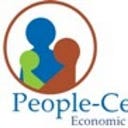Forbes, IP and social enterprise
When my colleague, founder Terry Hallman spoke in his last few months about our work, he reminded me that he was writing for his life. It wasn’t just his life he was writing for but those of disabled children abandoned to state care.
I’d helped him introduce his profit-for-purpose business approach to the UK and on to develop a ‘Marshall Plan’ strategy for Ukraine.
Terry was well aware of the possibility that his work could be hijacked so it was published with copyright in 2007, in a prominent web magazine. At the time he wrote:
“As the 60th anniversary of the Marshall Plan came around in June 2007, noise was emerging within Ukraine of a certain political boss preparing a Marshall Plan for Ukraine. This person was a reputed mob boss — exactly the sort of entity that the original Marshall Plan meant to oppose. It seemed most likely that whatever he came up with would be self-serving, hijacking the label ‘Marshall Plan’ and turning the whole notion on its head. I reviewed the original Marshall Plan and realized that what I had written was, in fact, the definition and spirit of the original Marshall Plan. Thus, in June 2007, I appended the original title with “A Marshall Plan for Ukraine.” After some discussion among trusted colleagues over timing, I published an abbreviated version of the paper in two parts in August 2007 in the ‘analytics’ section of the Ukrainian news journal for-ua.com.”
When he died in 2011, his last words were that his work, focussed on the lives of vulnerable children would be continued. That task fell on me. The ‘Marshall Plan’ for Ukraine is now also defended by a Creative Commons licence.
I shared our work with McKinsey in the Long Term Capitalism challenge.
What he argued about the direction of profit for social benefit has gained considerable traction in more recent years. It was being read back to me this week in Forbes magazine without attribution in Trevor Clawson’s article on Growth. Profit and Investment.
Terry’s work has begun 20 years ago when an invitation to serve on Clinton’s re-election committee gave the opportunity to argue the case for a new business model which challenged the longstanding assumption of shareholder primacy.
Back in 2009, the author raised the issue on Skoll Social Edge in a discussion about building a more efficient social marketplace:
“So, if we’re inventing projects that we know will be stolen, there are at least two problem areas.
First, if stolen, it’s stolen. It’s not unlike an architect having a building design stolen. The architect/designer is in best position to understand exactly how it works and how to assemble what they’ve designed.
If someone wants to use a project design, it’s the same as any other project design. The design comes after an in-depth research phase, which in my experience tends to be extremely difficult not least from danger involved in shining light under rocks where the core problems are to begin with. That is, corrupt bureaucrats and officials. When I finish the research part — which I always do so far (Russia/Crimea/Ukraine) — I know exactly what the problems are, what solutions are needed, and how to navigate. Possibly someone else could take over and manage things from there on — implementation. I have no problem with someone else implementing a project, and usually prefer that. Even if they do, it’s still a matter of stolen property in which we’ve invested unilaterally to produce. Almost always, however, there may remain critical components that the implementer just doesn’t want to bother with. Maybe it’s too dangerous. Maybe there are political considerations and conflicts. In that case, the designer is likely the only person(s) to know how to get those done. That’s when it’s time to consult with the architect.
Second, even if the project outcome, after theft, is what was envisioned by the designer(s), how does the venture qualify as a social enterprise? Sure, we can slowly design projects one by one as income from our funding side permits. We can do it a lot faster if we get paid for our R&D output, just like any designers.
Finally, is it acceptable to build projects with stolen property? What sort of results would that lead to? Can be build an ethical system based upon unethical behavior (such as violations of Intellectual Property Rights)?
If we invent such a system, is it anything new? Or is it just a twist on the old system?
One thing that can be collaborated openly is this: a Code of Ethics. But, whose ethics? What org(s) will enforce them, and how? Who decides who gets in, how, and why?”
The hegemony of social enterprise journalism has had no small part in obstructing what was intended to benefit the vulnerable and voiceless.
